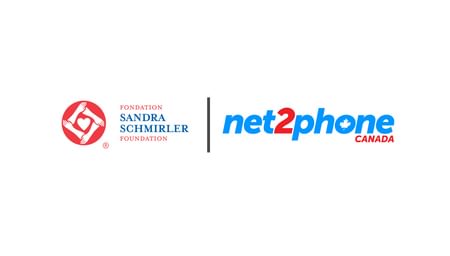
10 Ways to Build Customer Trust
No longer is price considered the most significant factor in a purchasing decision. Trustworthiness has become one of the most sought after qualities in a business. It’s what keeps existing clients engaged and churn rates low, and can contribute towards eliminating the hesitancy of purchasing new services and products. It has even sparked a relatively new business field, particularly within SaaS organizations whose business models rely on monthly recurring revenues. Customer success teams around the country, in various industries, focus their efforts on building and maintaining consumer trust to keep retention rates high. Today we go over 10 ways on how to build customer trust, and how this can affect your company long term using strategies from customer success experts.
Transparent Communication
Establish a base of transparency regarding costs, conditions, and system performance to build trust. Knowing that your company is equipping your customers with vital information that is overlooked when progressing through the buying process is one of the reasons why many repeat purchase or renew service. Including system service information and updated product reports are also avenues where you can lay down the foundation for a long and healthy customer life cycle. Customers appreciate when companies aren’t hesitant to send notifications regarding potential feature modifications, systematic and technical failures, or even management reform.
Expertise
Serving as an expert in your field instills trust, no questions asked. Now, this may not always be the case in terms of technical expertise (make no mistake, technical knowledge is the area where you strive to be seen as an expert) but sometimes in terms of understanding your customers' issues and needs. As for other areas of expertise, you want to position yourself as a trusted thought leader. Exercise this by continuously working with your marketing department to produce relevant customer-facing materials (eg. blog posts, videos, Q&As, podcasts, emails), and researching future industry trends. Similarly, prepare your customer success teams to handle these new technical and industrial challenges with ease, both involving technology and communication. The more you know about potential industry challenges, the more prepared your customer success team will be while your competition is still catching up.
Desired Outcomes and Results
Align your company so that your desired outcomes and results match those of your customers. Never let the thought of hitting incredibly high internal sales targets interfere with your intent to provide solutions for your customers. Yes, hitting high company sales targets are extremely important for your organization, allowing you to reinvest in serving your customers, but your customer success teams are responsible for fostering long-term trusted relationships. Remember, it’s not uncommon to see your customers placing less importance on your product or service, and more on the results they see by using them. Set a common goal in solving any issues customers may have when initiating contact.
Produce Accurate Value
It’s easy to assume that your company provides value in everything it offers, but not all clients have the same use cases. Follow up with customers and ask questions regarding what they value most in your company, product, or service. Always help re-align how you produce value moving forward. Just because your product or service is affordable, is a solution to a specific problem, or utilizes the most advanced technology doesn’t necessarily mean it’s value to your clients is ever-lasting. Allow customers to define their definition of value and make sure you are meeting their standards.
Proactive vs. Reactive
Be ahead of the curve. If you’re noticing trends in customer behaviour, admin changes, contract renewals, terminations, or plan adjustments, start taking notes. Working in a proactive environment encourages your teams to spot potential benefits your customers could be missing, and communicate that with them in advance of renewals. This could even include having them pilot new features or products. Contact your customers not only before their contract or product reaches a point of renewal, but periodically. React to what your customers are saying by always ensuring your service is delivering on solutions.
Adaptability and Customization
Not all solutions are “one-size fits all”. Occasionally adapting to rare requests is a great way to build trust. Sometimes, this might involve creating a custom system or product for them. Furthermore, it might be the motivating factor behind the trust they have with your business. Ensure customer success teams are adapting to customer needs, not just providing a “one-size fits all” approach. Communicate that with the rest of the organization.
Customer Viewpoint
Put yourself in your customers’ shoes. Have a sales development representative or sales account executive pitch you. Talk to one of your customer success or IT team members and go through a mock customer call. Building trust involves knowing how your customers feel when they deal with your organization. What better way to have a customer’s point of view than to pretend you’re one of them.
Availability
Here at net2phone Canada, this is something we know very well. Having the opportunity to work with customers at any time of their choosing instills trust and reliability. With something like a cloud-based VoIP business communications system, companies and customers alike can worry less about hours of operation and focus on finding solutions. Commit to serving your customers in times of need. This may very well happen outside of normal operating hours, so ensuring your customers have a way to communicate with your business when suited best for their schedule is extremely important. Don’t leave them high and dry.
Tone
Just because a customer might want to pursue other business options doesn’t make it acceptable to weed them out as viable business opportunities. It’s easy to maintain a proper tone with returning or renewing customers, but how do you perform when they want to terminate business? You treat them with respect and openness, which in turn builds trust. Treating customers with a high level of respect when terminating business not only preserves your image as an organization but fosters an avenue for returning. Let customers experience what suits them best. They will most likely compare the two experiences. Always give them an open door policy to return hassle-free.
Efficiency
This one ties everything together. When all of the above-mentioned tactics are used as best as they can, your customers will notice more company-wide efficiency. Renewing, terminating, buying, contracting, supporting, advising, learning, and adapting all become an efficient process. With practice comes an important area when building trust. Let’s not forget about speed. The difference between answering a call in 60 seconds versus 5 minutes is tremendous, surprisingly. Not everyone has the same tolerance and patience when contacting a business should they need to resolve issues. This has its limitations with team size but is an opportunity for businesses to re-evaluate where they want to succeed. Part of building trust is knowing that all of these tactics can come together, especially in record time.
Ensure your business is taking the right steps towards building trust with customers by using a cloud-based VoIP business communications system. Check out why net2phone Canada is different.


